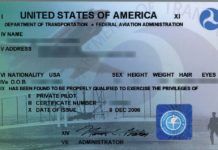Where is our FS21?
The tale used to go like this: Its a dark and stormy night. Youve spent the last 500 miles bouncing around the inside of an unbroken cloud, living in a world of round instruments 20 inches in front of your face. Youve kept the attitude indicator blue-side up, the altimeters 100s hand at 12 oclock, and the CDI needle within a degree or two of center as VOR after VOR has ticked by. On departure, the TAF for your destination was sickeningly close to minimums-but that information is hours old.
HSI Localizer Magic
Let's start with an old hangar-flying puzzle. You're outbound on the localizer back course. Your HSI course points back to the runway and you've...
Oops, but Not Busted
Even pros flying hundreds of hours a year slip up once in awhile. Those of us who fly fewer hours, however, clearly have increased odds of doing so. Nevertheless, when you do goof, a request to call ATC doesnt have to become a license altering event if you follow some time-tested advice.
Your Route on the visual
I started flying in 1963 at the Air Force ROTC program at Indiana University. This put me in the interesting position of studying the writings of both the Air Force and the five-year-old FAA. Poor writing was rampant. In fact, the highest grade my instructors would give these writings was a D.
Watch your Step(down)
Most pilots I know are lazy. Writing as one who has spent most of his career flying airplanes, thats meant to be a compliment. The lazy pilot tends to accomplish the least work necessary in order to achieve the intended goal. This usually improves workload management and provides a greater reserve of attention. However, sometimes laziness can get you into trouble, such as in determining when to intercept and track a glidepath. …
Long Way Around
The pilot was just trying to get home. He filed a route from Pennsylvania to his destination in Delaware. The weather was acting up. Hed already delayed his departure, waiting out weather over his destination and along his route. Once in the air, he wrangled a few shortcuts from Cleveland Center, shaving plenty of mileage off of his filed route. So far so good. He was saving time and getting around the remaining weather. …
The FAA Blinked
The battle has raged a long time between useful, inexpensive, portable, non-certified devices and panel-mount certified instrumentation. In practice, weve long used non-certified portables for navigation and we havent been falling out of sky in swarms.
ATP: Higher Cost Soon
The final rule for pilot certification and qualification requirements for air carrier operations, The 1500 Hour Rule or First Officer Qualification Rule, (FOQ) was released by the FAA on July 7, 2013. It was published in the Federal Register on July 15, 2013, effective immediately.
Visual Area Protection
Visual area penetrations have become a challenging problem for the FAA, airports and pilots. First, keeping track of them can be a moving target. Then theres the conflict between the hazard of visual area obstacles and the safety benefit of using an advisory glidepath. Although weve covered various aspects of this topic in the April and July 2013 issues of IFR, recent changes could affect approaches you fly.
Briefing: August 2014
The Asiana Airlines flight crew mismanaged the descent of a 777 into San Francisco International Airport last July, the NTSB said in its probable-cause hearing in June. The pilots made several mistakes and by the time they decided to go around it was too late. The airplane hit the seawall, causing a fiery crash that killed three passengers and seriously injured 49. The board also found the complexities of the auto-throttle and autopilot flight director systems contributed to the crash, and should have been more clearly described both in Boeings documentation and in Asiana pilot training. Crew fatigue also was a factor. The board also said emergency responders on the scene, who ran over one of the crash victims with a fire truck, should have been better trained and equipped. The board followed up with 27 safety recommendations to the airline, Boeing, the aircraft firefighting group, and the city and county of San Francisco.
Gas Games
Fuel is the single biggest variable expense for aircraft operators. What if you could reduce your cost by 30 percent? In addition to being expensive, gas is heavy. New airplanes containing the creature comforts of a luxury car have terrible useful loads with full tanks. Maybe three normal adults can fit into a typical four-place airplane before being overweight. Add baggage, golf clubs, or fishing poles and youre leaving gas behind. Trading gas for weight can severely limit range, one of the consequences of traveling by plane.
Rules to Live By
Its no secret that general aviations accident rate is significantly worse than the airlines and corporate flight departments. According to NTSB studies over the first 10 years of this century, youre 12 times more likely to have an accident when flying your own or a rented GA aircraft.














